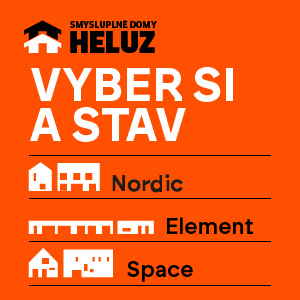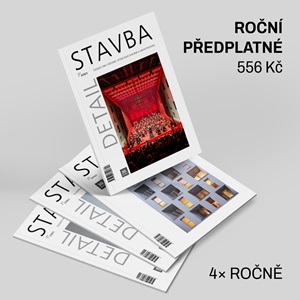Fotogalerie ke článku (1)
Frank Gehry, foto: Peter Eric Arnell, se svolením: Fondazione La Biennale di Venezia
Na benátském Biennnale architektury za své celoživotní dílo získal Zlatého lva americký architekt Frank Gehry. Oznámilo to tiskové středisko benátského Biennale.
Porota, jíž předsedal Paolo Baratta, na návrh ředitele Biennale Aarona Betskyho přiřkla Zlatého lva za celoživotní dílo u příležitosti 11. mezinárodní výstavy architektury Franku Gehrymu. Tímto oceněním chtěla zdůraznit, do jaké míry je Gehryho dílo významným výsledkem mnoha let experimentů.
"Frank Gehry přetvořil moderní architekturu," uvedl Aaron Betsky. "Osvobodil ji z hranic 'krabice' a z omezení běžné stavební praxe. Gehryho architektura, která je experimentální tak jako umělecká praxe, která ji inspirovala, je skutečně moderní vzor pro architekturu, která je více než stavitelství".
Porota rovněž podtrhla, jak významně bude Gehryho dílo v Benátkách zastoupeno: bude zde stát jeho Benátský průjezd (Venice Gateway), spojující město s letištěm.
Gehry, v Česku známý jako jeden z autorů Tančícího domu, kromě četných budov ve Spojených státech projektoval Guggenheimovo muzeum ve španělském Bilbau či Americké středisko v Paříži.
Benátské Biennale je už více než sto let jednou z nejprestižnějších kulturních institucí světa. Od svého založení v roce 1895 propaguje nové tendence v umění a pořádá mezinárodní přehlídky moderního umění v architektuře, filmu, tanci, hudbě a divadle.
Za celoživotní dílo porota Biennale vyznamenala Stříbrným lvem amerického historika architektury Jamese Ackermanna.
Zdroj: Zpráva ČTK, pel mik, 27. června 2008.
Doplněno Stavbaweb:
Frank Gehry, Golden Lion for Lifetime Achievement
of the 11th International Architecture Exhibition
Case Statement by Aaron Betsky
No other living architect has shown us more clearly how beautiful and productive experimentation can be than Frank Owen Gehry. Now in his fifth decade of practice, Gehry is one of the most famous architects in the world because of his exuberant designs for such structures as the Bilbao Guggenheim (1998) and the Walt Disney Concert Hall (2005). What not everybody who admires his sinuous forms and light-filled embrace of space may realize is that the basis for these forms is not pure intuition, but years of experimentation.
After building up a successful practice in Los Angeles in the 1960s, Gehry abandoned the pursuit of ever-large commissions for the design of small-scale structures in which he sought to pare architecture down to its most elemental shapes. He then destabilized the relationship between them and set them free as compositions. He went even further in the design of his own house in Santa Monica, California (1978), in which he undressed the building down to its bare construction materials and incorporated fragments of existing structures, an asphalt driveway and chain link fencing into the (un)finished construction.
Having stripped architecture down to its building blocks, Gehry then built it up again into a free-form village of forms he composed as dancing blocks and thrusting shapes. His breakthrough into the shapes that made him famous came as a result not of one commission, but of his reversion to extra-architectural elements he mined from art or, in the case of the fish that became his formal mantra, from his own memories.
Frank Gehry was also among the first major architects to adapt computer-aided design. To him, this was not just a way of creating buildings with greater efficiency, but of liberating the architect from what he sees as his or her dependent position into one in which anything the architect can imagine she or he can build.
Frank Gehry has transformed modern architecture. He has liberated it from the confines of the box and the constraints of common building practices. He has shown that the technical solutions architecture offers mean nothing unless they are put to use for the production of a cultural artifacts that liberate us into a new understanding of our world. Slippery as his fish, as open as his undressed buildings, and as experimental as the art practices that have been his inspiration, Frank Gehry’s architecture is the very modern model for an architecture beyond building.
Zdroj: Press Office la Biennale di Venezia

















Minimalistické, ale praktické. Taková ideální kombinace pro rodinný život. A ta krytá terasa vypadá podle popisu parádně :-)
Zní to jako velmi promyšlený návrh. Máme podobně svažitý pozemek, tak mě inspiruje, že i takové místo má velký potenciál!
Je to moc krásný projekt :-) A ten důraz na orientaci místností podle světových stran..To dělá v každodenním životě obrovský…
Musím potvrdit..žádná plíseň, žádné tepelné mosty. Funguje skvěle!
Projekt pana Vostrackého sleduju už delší dobu, má opravdu cit pro funkční a zároveň estetické stavby. Tahle není výjimkou.